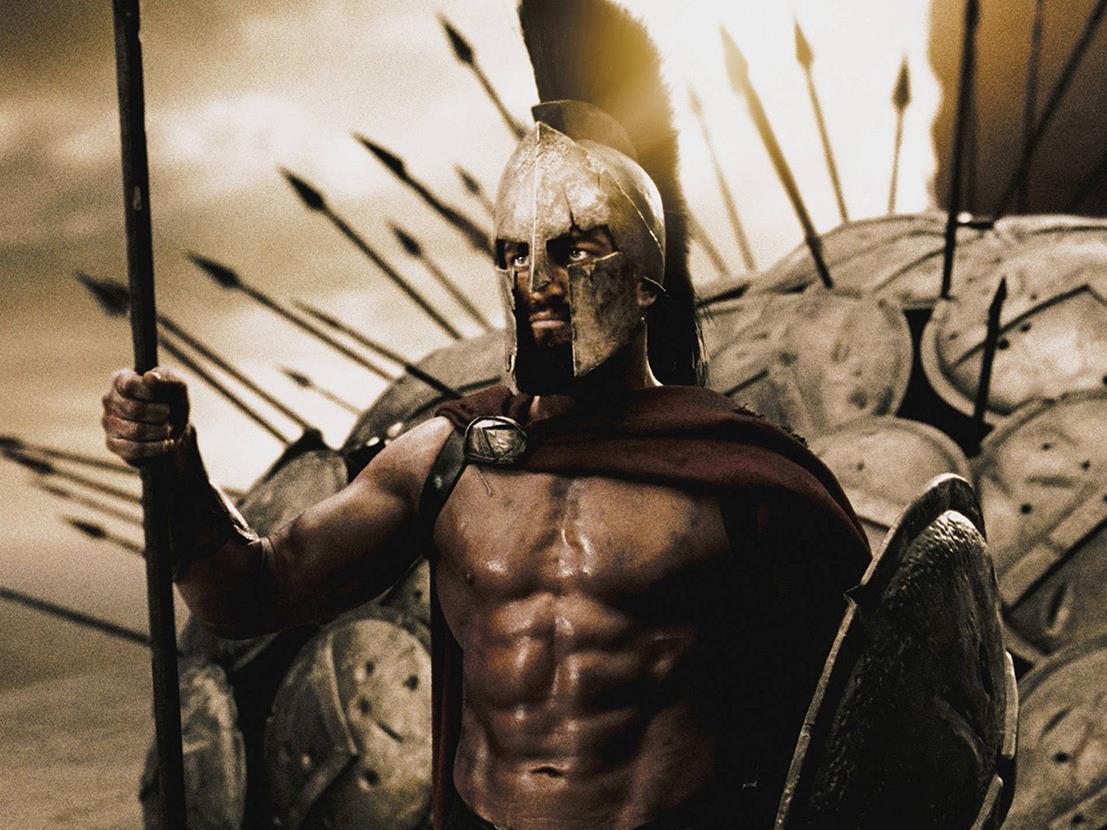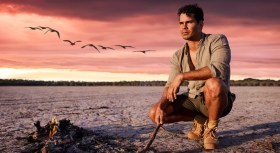History plays out in slow motion, at least where modern retellings of the ancient battles between Greece and Persia circa 490 – 479 BC are concerned. Adapting Frank Miller’s graphic novel of the same name from 2006, the first film in this series, 300, rendered one key clash in the ongoing combat – the Battle of Thermopylae – through its highly-stylised filter, and box office success ensued. Taking inspiration from Miller’s as-yet unpublished Xerxes, the follow-up film, 300: Rise of an Empire, endeavours to repeat the same feat, broadening its scope but retaining its distinctive aesthetic flourishes.
Director Noam Murro (Smart People), 300 helmer/scribe turned sequel writer Zack Snyder (Sucker Punch), and his returning scripting partner Kurt Johnstad (Act of Valor) weave their story in, around and through the narrative of the first film, providing background and context, filling in the detail of concurrent events, and exploring the aftermath of the efforts of Leonidas (Gerard Butler, as seen in re-used footage). This time, the feature’s narrator is Leonidas’s queen, Gorgo (Lena Headey, The Mortal Instruments: City of Bones), and its hero an Athenian, Themistocles (Sullivan Stapleton, Gangster Squad).
The Battle of Marathon provides the set-up, fleshing out Xerxes’s vendetta against the nation that killed his father; the Battles of Artemisium and Salamis furnish the main thrust of the film, as Themistocles and Artemesia face off across the Aegean sea. Yet, the historical tales are merely an excuse for a second round of colour-drained spectacle and deliberately sluggish scenes of carnage. Tones of grey and maroon paint a palette as arresting as the gold and red of the first feature. Arrows fly, swords swing, blood flows, and limbs burst from bodies, again at a purposefully leisurely pace.
Indeed, the bulk of the film proves little more than an assemblage of drawn-out frays, laced with the slightest smatterings of non-combat moments and the broadest of characterisations. The purported embodiment of dutiful masculinity, Themistocles orates more than his fair share of rousing speeches about patriotism, enlisting father-and-son team Scyllias (Callan Mulvey, Zero Dark Thirty) and Calisto (Jack O’Connell, TV’s Skins) in his cause for supposed emotional impact. The unhinged, wicked temptress, Artemesia struts past her enemies, seducing and scaring in equal measure, but troubled by her own horrific origins. Archetypes – of good and evil, devotion and sacrifice, and responsibility and revenge – are blatantly established and heavily relied upon.
It is far from surprising that within such restrictive confines, both in style and in story, the performances are perfunctory – though the actors do the best they can with such thinly-drawn roles. Stapleton is a likeable lead, albeit constantly overshadowed by the vampish Green obviously relishing the ridiculousness of her character’s many maniacal machinations and manipulations. The eager O’Connell impresses among the many manly supports, while Headey displays the steeliness of her Game of Thrones persona.
Of course, adherence to the expected, to the parameters established by its predecessor, is all that 300: Rise of an Empire requests of its cast and creatives. That it succeeds as a faithful reproduction of genre conventions is both an achievement and to the feature’s detriment. Prolonged, pedestrian, and pushing its aesthetics past their limit, this might be the only sequel, seven years in the making, that 300 could have asked for.
Rating: 2 ½ stars out of 5
300: Rise of an Empire
Director: Noam Murro
US, 2014, 102 mins
Release date: March 6
Distributor: Roadshow
Rated: MA
Actors:
Director:
Format:
Country:
Release:





